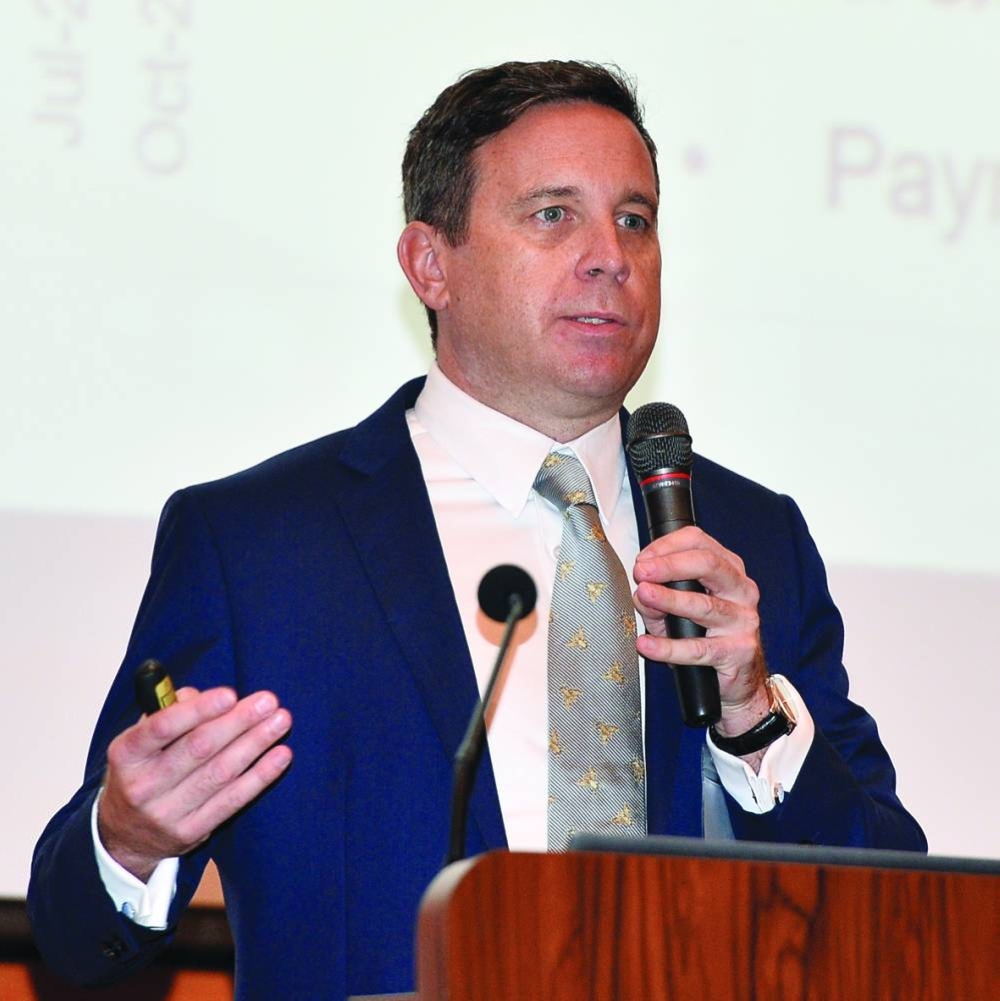Promoting an environment of transparency and well-defined regulatory policies will play a crucial role in attracting real estate investments into Qatar, an executive of Cushman and Wakefield has said.
Johnny Archer, head of Consulting and Research at Cushman and Wakefield, made the statement Wednesday during the firm’s regular real estate ‘Breakfast Seminar’, where he was joined by other speakers Edd Brookes, GM & head of Middle East, and Mairead Hughes, Country Manager Qatar, Oman & Kuwait, RICS.
Archer lauded the recent measures implemented by the Qatari government, such as the online real estate platform, the establishment of a new Real Estate Regulatory Authority, and the inaugural meeting of Qatar Chamber’s Real Estate Committee.
He emphasised that a transparent and well-regulated market is imperative in attracting real estate investment. "Qatar’s real estate market adjusts and matures following years of strong growth ahead of the World Cup, and receiving advice from real estate professionals has never been more important.”
Discussing the firm’s ‘Q4 Real Estate Market Review’, Archer pointed out that recent months have seen increased activity in the government sector.
"We understand that in excess of 70,000sqm of office space across West Bay and Msheireb has either been leased or is under offer to various government entities. These transactions will see the availability of vacant office space in West Bay reduce to approximately 15%, while overall availability in the prime office districts of Msheireb, Lusail, and West Bay is approximately 21%.
"The fall in availability in recent years is reflective of a number of large-scale leases by government entities or the oil and gas sector. This includes the vast Abdullah Bin Hamad Al Attiyah District, occupied in its entirety by Qatar Energy."
According to Archer, “The current oversupply of office space in Qatar will continue to be a drag on office rent. The supply of purpose-built office accommodation in Qatar has reached approximately 5.4mn sq m in 2024 with an estimated 1.3mn to 1.4mn sqm of vacant space available.”
Archer said new apartment buildings have attracted strong demand from residents looking to upgrade. This demand means that many new buildings in good locations often reach full occupancy “within three months,” he noted.
“While tourist arrivals have increased significantly, occupancy rates fell from 58% in H1 2022 to 53%, due largely to an increase in hotel room supply over that period. Between June 2022 and June 2023, the supply of hotel rooms increased by 27% to 38,754.
"While the unprecedented increase in supply in the approach to the World Cup has put pressure on performance metrics, ADRs remained stable at QR425 for the first six months of the year. Over the second half of the year, figures from the Planning and Statistics Authority showed that occupancy rates remained stable between 52% and 58% with a spike to 66% in October.
On the retail market, Archer added: “Some of Qatar’s main malls have indicated that footfall and spending have remained consistent this year. The increase in supply over recent years has, however, seen both footfall and occupancy drop in some of Doha’s older malls, as properties compete for a finite number of retailers and F&B operators. While there is an increasing disparity between malls, Cushman and Wakefield estimate that there is now an overall vacancy rate of more than 20% (by unit) in Qatar’s 20 largest malls.
“Retail mall managers have reported the noticeable impact that international geopolitics has had in Q4. A number of international brands have seen a downturn in trade due to the war in Gaza. It is unclear what impact geopolitics and associated consumer behaviour will have on Qatar’s retail market in 2024.”

Johnny Archer addressing the seminar Wednesday. PICTURE: Shaji Kayamkulam

